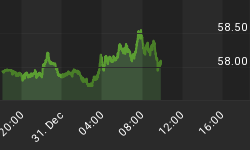Despite pronounced risks in certain credit instruments, people have been investing record amounts of money into anything with a yield. For example, municipal bond funds had bubble-like inflows in 2009 despite municipalities having well known fiscal imbalances (Figure 1). In fact, inflows of $69 billion in 2009 were more than 4x the amount of the next highest annual inflows, which were recorded in 2002.
Figure 1. Annual Municipal Bond Fund Flows ($ millions)
Source: Bloomberg, ICI
Figure 2 shows monthly fund flows. Note that in August and September of 2009, combined inflows of $19.1 billion were greater than inflows during any other year.
Figure 2. Monthly Municipal Bond Fund Flows ($ millions)
Source: Bloomberg, ICI
The surge in bond inflows has helped all borrowers, in part, because of diversification, whereby funds are allocated across a large spectrum of borrowers. In a sense, a rising tide has lifted all boats, even those with gaping leaks. This concept is illustrated by the International Treasury Bond ETF, BWX (Figure 3). BWX is the largest ETF of its kind and has grown from $761 million to $1.5 billion since its inception in October 2007. BWX holds bonds issued by some of the riskiest sovereigns in the developed world with roughly 20% invested in Italy, Spain and Greece and another 22% in Japan. If the current sovereign problems do not end, as equity markets seem to suggest they will, outflows from these pooled instruments will impact the more credit-worthy countries in much the same way that problems with subprime led to an unraveling of the entire housing industry.
Figure 3. Top Holdings and Top Country Weights of SPDR Barclays Capital International Treasury Bond ETF (BWX)
Source: SPDR Barclays Capital International Treasury Bond ETF (BWX) Fact Sheet
















